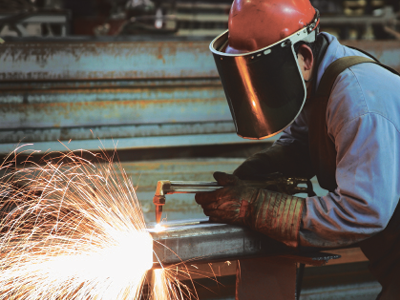Create Smooth Cuts Cleaner and Faster with StarFlame™ C Fuel Gas
The oxyfuel gas cutting process severs metal by utilizing the chemical reaction of oxygen and metal at elevated temperatures. The required temperature is provided by the combustion of a fuel gas and oxygen and the cutting action is supported by a pure oxygen stream.
The quality of the cut can be determined by a number of factors, including – but not limited to – cut type, cutting tip used, cutting method and type of fuel gas used. While acetylene is commonly used as the fuel of choice for oxyfuel cutting due to its high flame temperature, it also presents its share of disadvantages including instability and sensitivity to shock. Other fuel gases used are propylene, propane and natural gas – each with their own set of benefits and limitations.
Exclusive from Linde, the StarFlame™
C cutting fuel gas is a propane-based
alternative fuel with a well-engineered additive that creates a high temperature fuel gas like acetylene but also allows for much smoother cuts. Providing twice the BTUs when heating, StarFlame C fuel gas burns hotter than other fuel gases
so that it cuts quicker. 
Features and Benefits of StarFlame C Cutting Fuel Gas
- Quicker start to steel ignition point
- Faster cutting speeds whether beveling, making sharp turns or cutting intricate patterns
- Reduced labor time due to high cutting speed
- Quick, clean piercing
- Stable, not sensitive to shock
- Reduced potential for torch backfire
- Reduced fuel cost up to 50%
- One 100-pound tank equals five large acetylene tanks
Why StarFlame C Fuel Gas Should Be Your Fuel Gas of Choice
StarFlame C cutting fuel gas is considered a more “forgiving” fuel gas because good results can be achieved even when the heating or cutting tip is too close to the workpiece or when the distance opens up one to two inches during cutting. Maintaining an exact distance from the workpiece is not critical which makes StarFlame C fuel gas an excellent choice for hand-torch cutting. With faster cutting speeds, quick and clean piercing, minimal slag and weldback, and significantly less smoke and soot, StarFlame C fuel gas cutting fuel is more economical, environmentally friendly and safer than acetylene and other fuel gases.
Contact Linde for a Demonstration




























